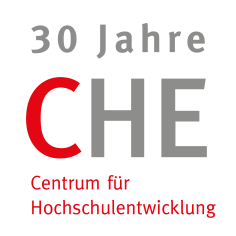The spotlight „Higher education becoming the normality - also geographically?” examines the development of the number of university campuses in Germany between 1990 and 2016. It follows the thesis that the quantitative expansion of the higher education system, as measured by the rising number of university entrants and students, has also had a positive impact on the amount of university campuses.
In fact, the number of universities and satellite campuses has increased significantly - either through the founding of new higher education institutions or through the establishment of new satellite campuses of existing institutions - by 167%, an increase from 232 campuses in 1990 to 619 university sites in 2016. The growth is first and foremost the result of the expansion in the sector of public and private universities of applied sciences, counting 324 new sites overall. In relation to all founding during the time of investigation, this amounts to 84%. Among the 324 new campuses of universities of applied sciences, the establishment of new satellite campuses (56%) outweigh the founding of new institutions. Furthermore, it becomes apparent that a high number of the new sites of universities of applied sciences are in private ownership. In line with the overall trend, most new campuses in this sector are satellite campuses. Even though only four satellite campuses were counted in 1990, this figure rose to 116 in 2016, which equates to an increase of 2800%. The number of new institutions grew by 438% from 21 to 113 private universities of applied sciences.
New campuses were primarily founded in major cities and metropolitan areas, where a comparatively large share of high school graduates reside and where many higher education institutions already existed. On top of the list are Berlin and Hamburg, followed by Cologne, Munich and Stuttgart. However, new university campuses were also established in administrative districts and independent cities, where no higher education institution had existed before. Whereas in 1990 more than two thirds of the administrative districts did not have a university campus, this figure has fallen well below 50% within 26 years. In 2016, no postal code area in Germany was further away than 59 kilometers (radius) from the next university campus, allowing every prospective student to reach a higher education institution or a satellite campus within approximately one hour. Autoren:
Hüning, Lars; Mordhorst, Lisa; Ziegele, Frank: Im Blickpunkt:
Hochschulbildung wird zum Normalfall –
auch in räumlicher Hinsicht?
Eine Analyse der Ausbreitung von Hochschulstandorten seit 1990
, 2017
| Datei | Aktion |
|---|---|
| Im_Blickpunkt_Hochschulbildung_in_raeumlicher_Hinsicht.pdf | Download |
- 1.16 MB Dateigrösse
- 1263 Downloads
